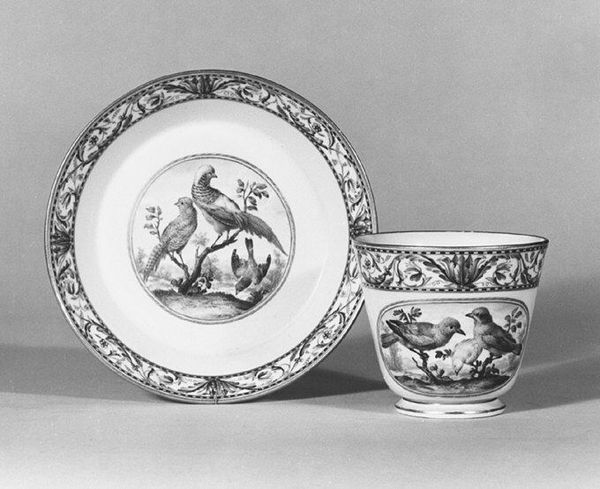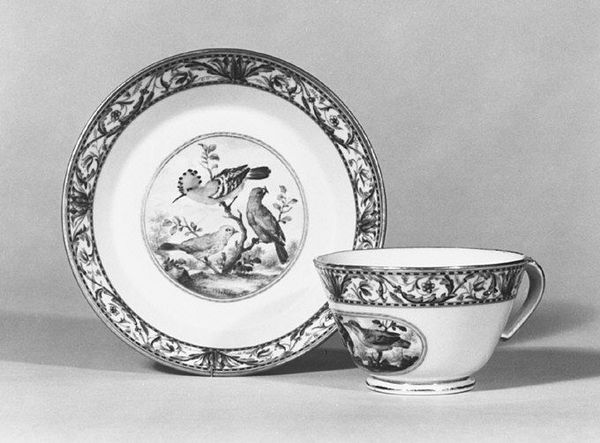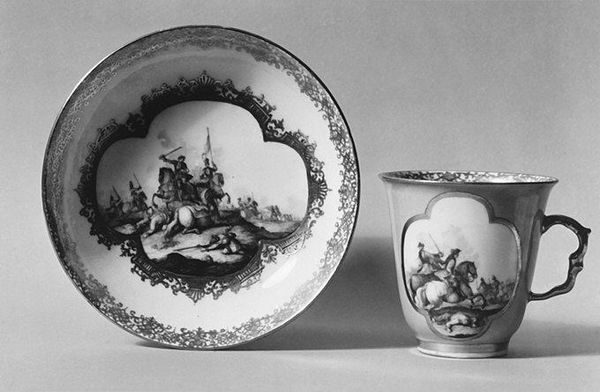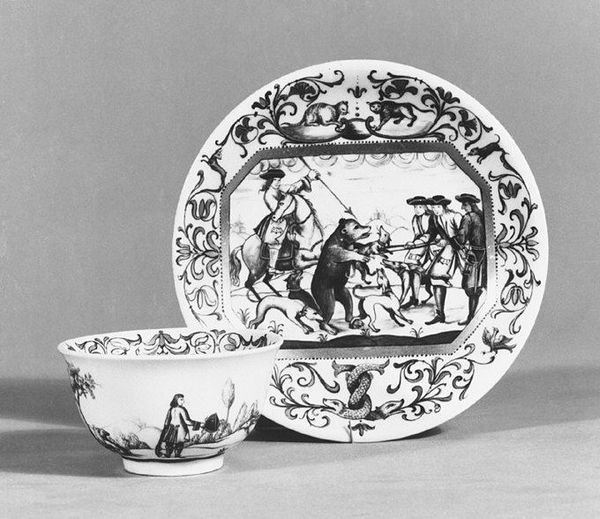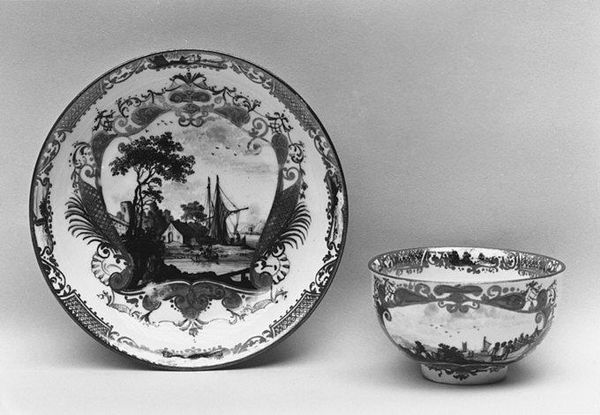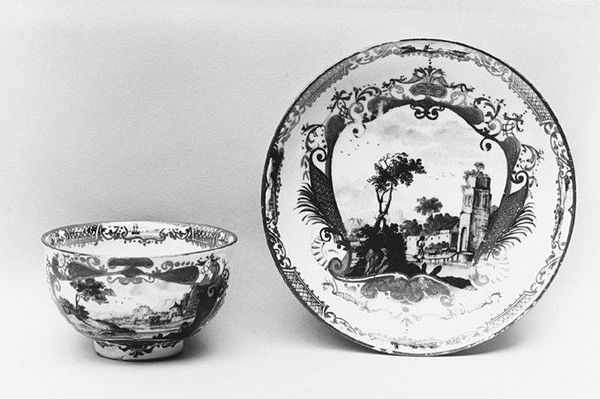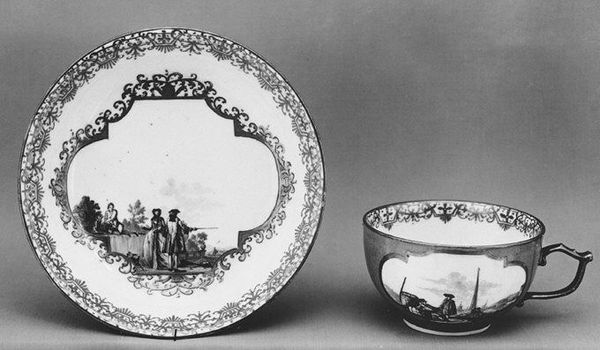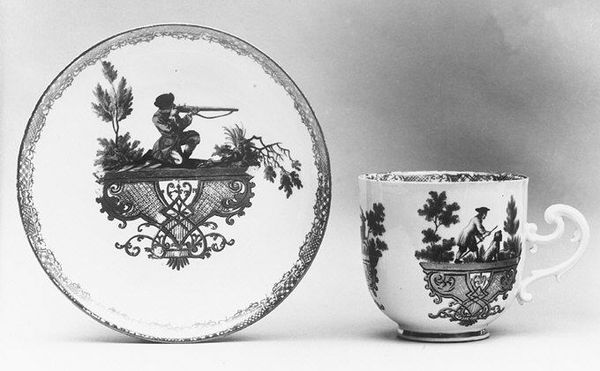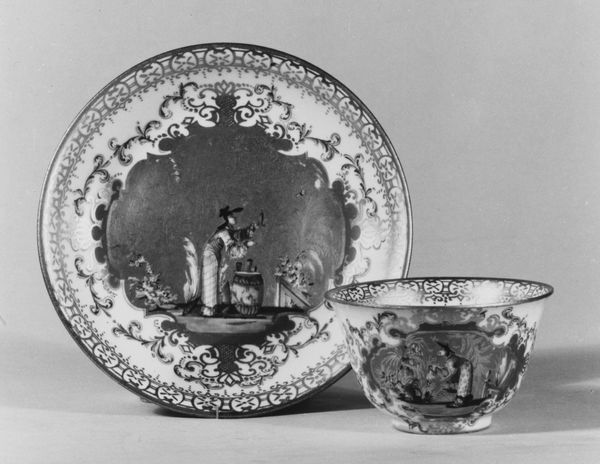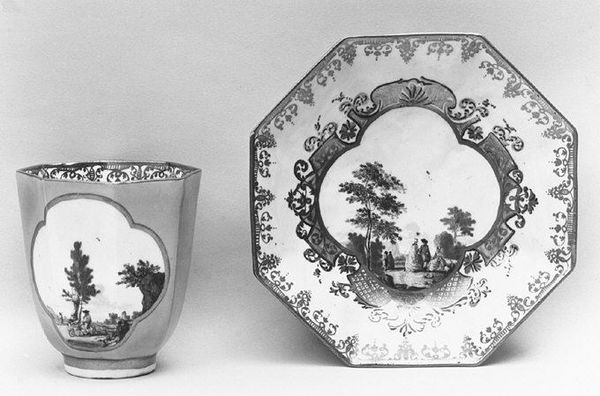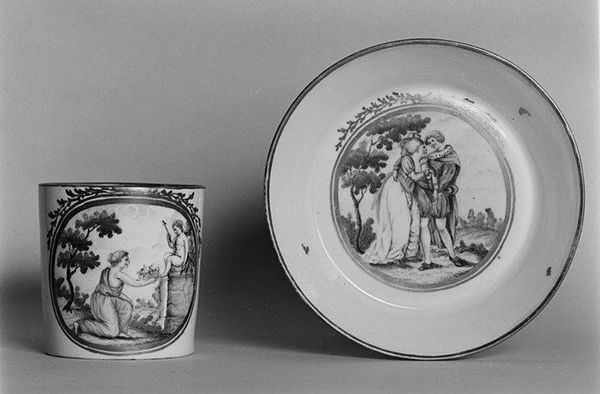
Dimensions: Height: 2 3/4 in. (7 cm)
Copyright: Public Domain
Editor: We're looking at a "Coffee Cup," part of a service, made sometime between 1775 and 1790 by the Meissen Manufactory. It's porcelain, decorated with prints of birds. There's also a saucer! The monochromatic color scheme gives it a delicate feel. What social meanings do you see in this object? Curator: Well, immediately I think of the rise of the bourgeoisie and their aspiration to aristocratic lifestyles. The Meissen Manufactory was *the* status symbol for porcelain, originally associated with royalty. Editor: So owning this would signal something about the owner? Curator: Exactly. It's about participating in a culture of refinement and display. Drinking coffee became a social ritual, not just a necessity. And consider the imagery of birds: are they simply decorative, or do they represent freedom, nature tamed for enjoyment within a domestic sphere? Editor: I hadn’t considered that aspect. What do you mean? Curator: Think about it: these birds, rendered in meticulous detail through print, are displayed on objects used daily. Is it about humankind's control over nature, brought indoors and consumed during leisurely moments? Or something else? Editor: I see. It becomes a symbol of wealth and power. But aren’t bird motifs very common in decorative arts? Is this set particularly interesting from a political standpoint? Curator: Its ubiquity *is* the point. Porcelain, once rare, became more accessible to a wider market. This cup signifies the blurring of social lines through consumption and the manufacturing of new societal behaviors through art. Editor: That's fascinating. It makes me look at this delicate little cup with new eyes, now! Thanks! Curator: Indeed. It highlights how objects embody power dynamics and shape our understanding of history through everyday interactions. A seemingly simple coffee cup reflects larger historical shifts.
Comments
No comments
Be the first to comment and join the conversation on the ultimate creative platform.

